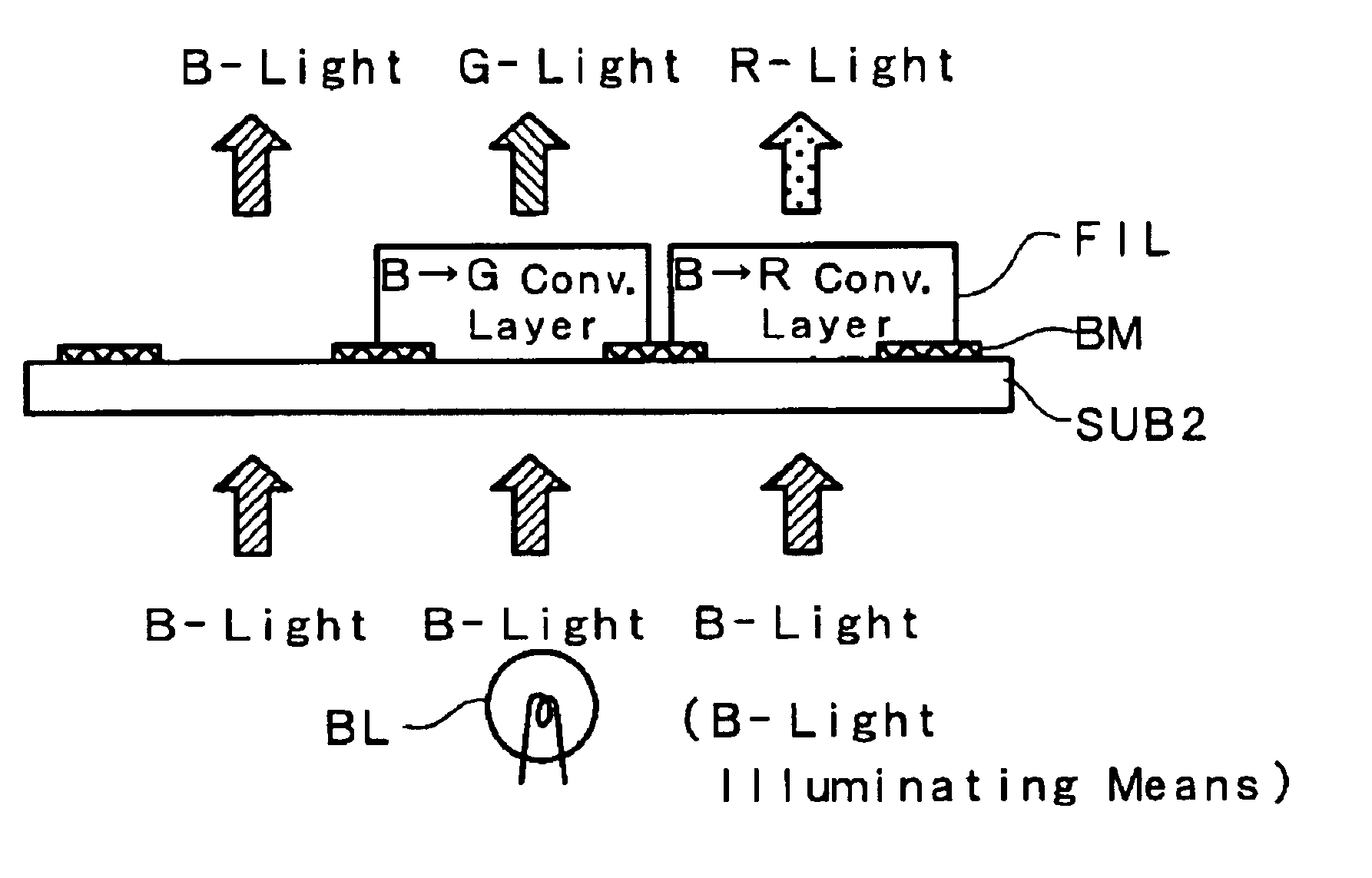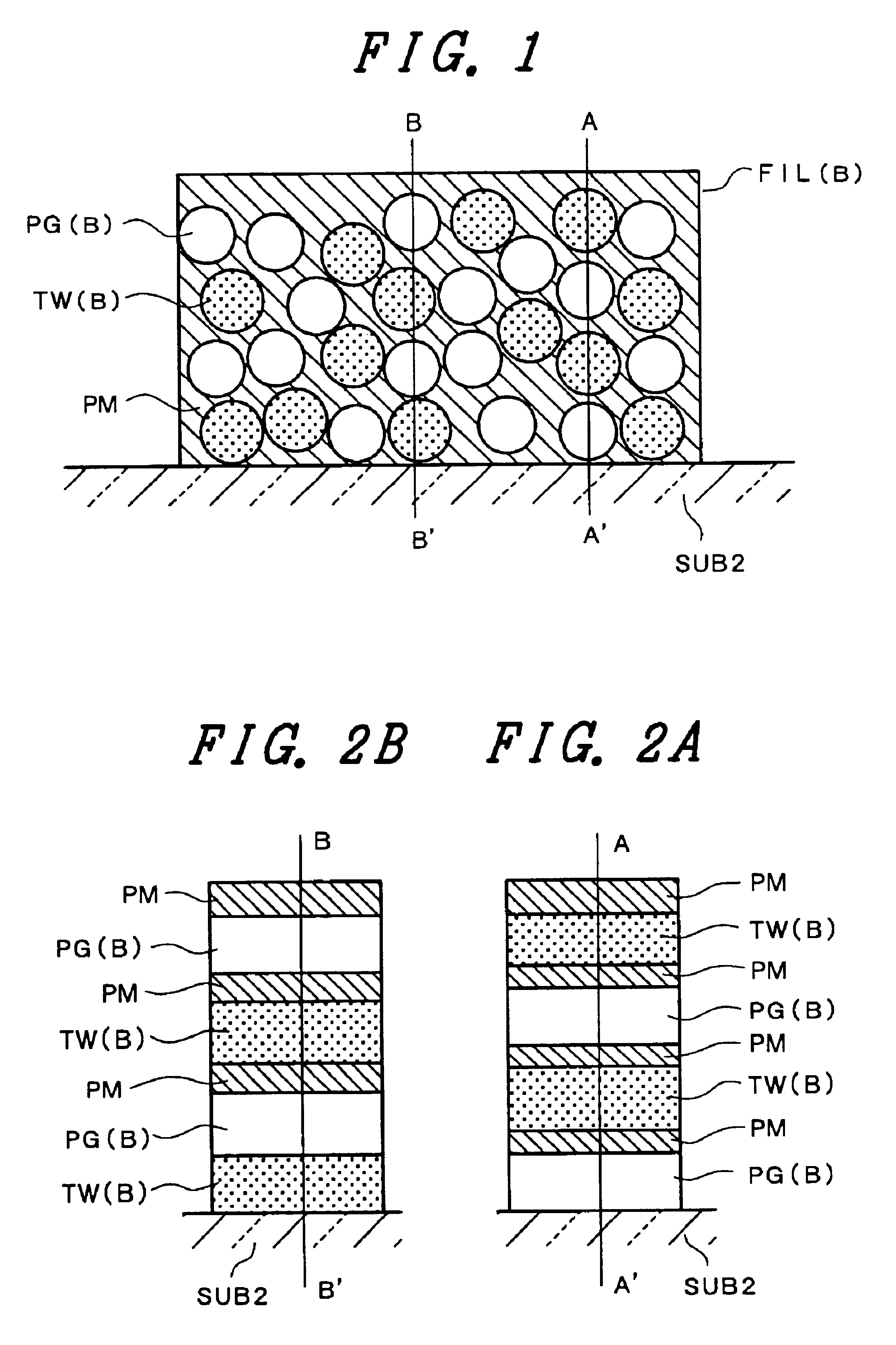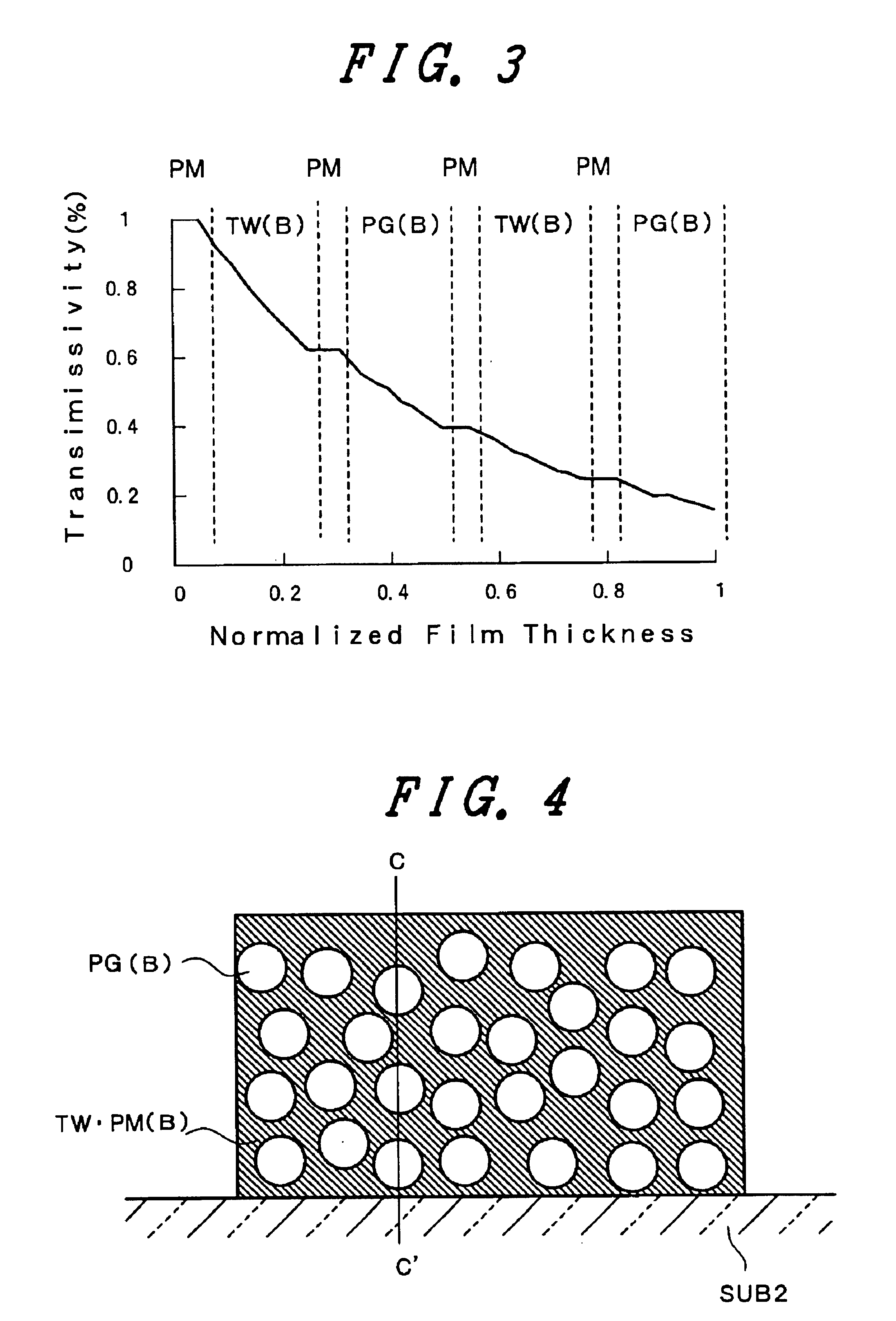Liquid crystal display device
a liquid crystal display and display device technology, applied in static indicating devices, instruments, non-linear optics, etc., can solve problems such as color reproducibility, achieve the effects of increasing the amount of light in the wavelength range passing through the filter material, improving color purity and brightness, and effectively converting incident light into ligh
- Summary
- Abstract
- Description
- Claims
- Application Information
AI Technical Summary
Benefits of technology
Problems solved by technology
Method used
Image
Examples
second embodiment
The second embodiment is suited to color filters for a transparent-type liquid crystal display device in which the number of particles of the B pigment PG(B) per unit volume can be made large (thick-color display).
FIG. 6 is an explanatory view showing the relationship between the transmissivity and the normalized film thickness of the color filter shown in FIG. 4. In FIG. 4, it is assumed that the B pigment PG(B) is present in the state of being averagely dispersed in the solid solution TW.PM(B) of polymer and wavelength converting material.
In the above-described first embodiment shown in FIG. 3, the color-converting material TW(B) is dispersed in the polymer PM together with the B pigment PG(B) as the particles of the blue fluorescent pigment, so that the optical transmissivity of the color filter in the thickness direction thereof varies in a staircase-shaped manner. In the second embodiment, since the color-converting material TW(B) is dissolved to form solid solution in the soli...
third embodiment
FIG. 11 is a cross-sectional view for diagrammatically explaining the construction of a color filter for the liquid crystal display device according to the invention. This color filter FIL uses an illuminating device (backlight) BL for emitting only one primary color, and areas each having a color-converting material for absorbing light in the wavelength range emitted from this backlight BL and converting one of a plurality of primary colors in other wavelength ranges and areas having neither filter materials nor color-converting materials are arranged in the color filter FIL.
Assuming that the plurality of primary colors are three colors R, G and B, three kinds of areas are formed on the inner surface of the upper glass substrate SUB2; one is an area of a B G converting layer containing a color-converting material which converts blue light (hereinafter, B-light) into green light (hereinafter, G-light), another is an area of a B R converting layer containing a color-converting materi...
fourth embodiment
FIG. 13 is a cross-sectional view for diagrammatically explaining the construction of a color filter for the liquid crystal display device according to the invention. This color filter FIL uses W-light illuminating means BL(W) for emitting light in a frequency range which covers all of red R, green G and blue B, and areas each having a color-converting material for absorbing light (W) in the wavelength range emitted from this backlight BL and converting one of a plurality of primary colors in other wavelength ranges are arranged in the color filter FIL.
Assuming that the plurality of primary colors are three colors R, G and B, three kinds of areas are formed on the inner surface of the upper glass substrate SUB2; one is an area of a W B converting layer containing a color-converting material which converts W-light into B-light, another is an area of a W G converting layer containing a color-converting material which converts W-light into G-light, and the other is an area of a W R con...
PUM
| Property | Measurement | Unit |
|---|---|---|
| thick | aaaaa | aaaaa |
| particle diameter | aaaaa | aaaaa |
| particle sizes | aaaaa | aaaaa |
Abstract
Description
Claims
Application Information
 Login to View More
Login to View More - R&D
- Intellectual Property
- Life Sciences
- Materials
- Tech Scout
- Unparalleled Data Quality
- Higher Quality Content
- 60% Fewer Hallucinations
Browse by: Latest US Patents, China's latest patents, Technical Efficacy Thesaurus, Application Domain, Technology Topic, Popular Technical Reports.
© 2025 PatSnap. All rights reserved.Legal|Privacy policy|Modern Slavery Act Transparency Statement|Sitemap|About US| Contact US: help@patsnap.com



